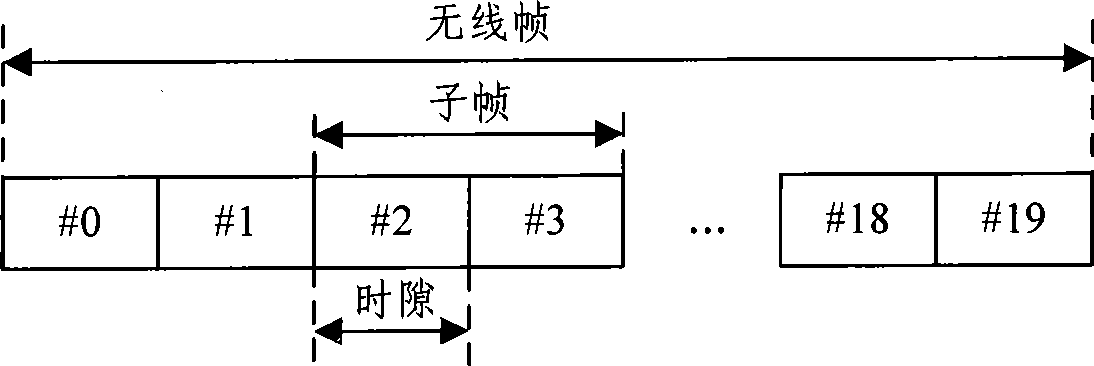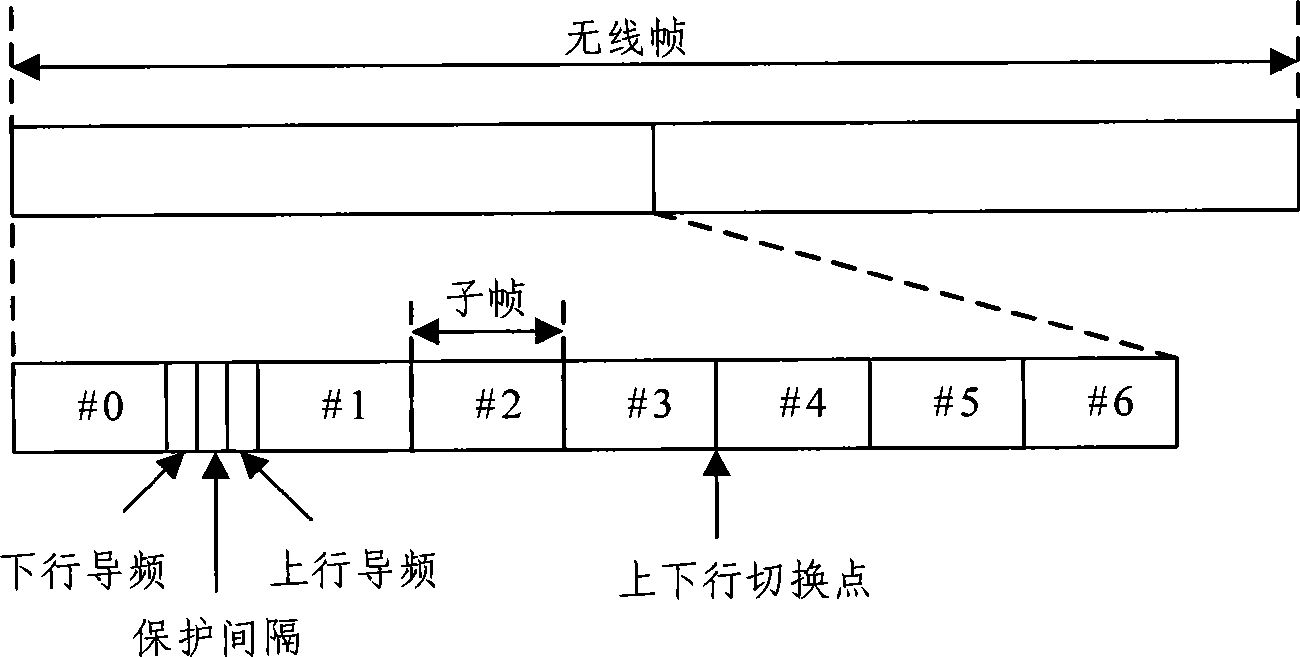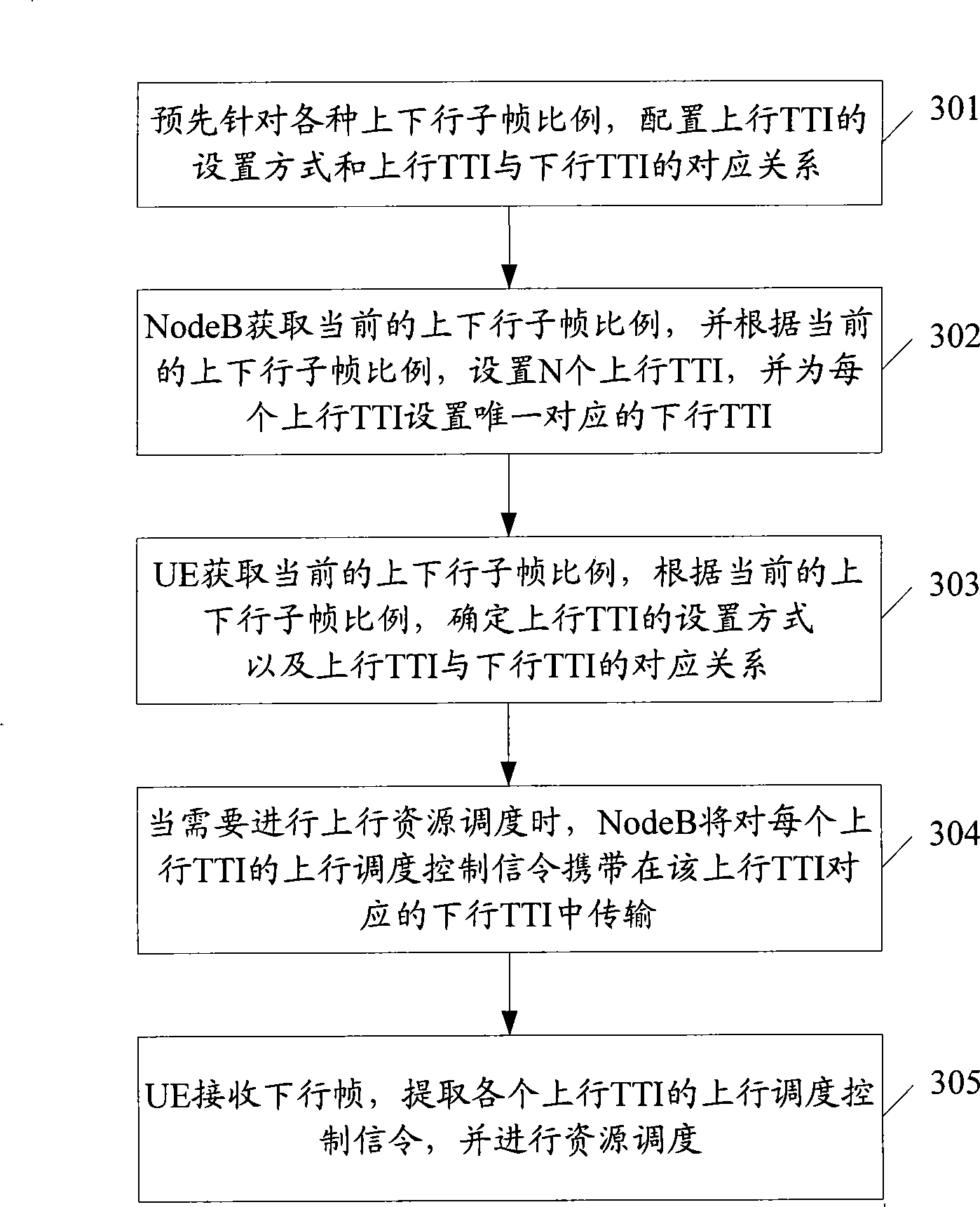Method and apparatus for lowering overhead of uplink scheduling control signaling
A scheduling control and signaling overhead technology, applied in wireless communication, electrical components, etc., can solve the problem of reducing channel utilization
- Summary
- Abstract
- Description
- Claims
- Application Information
AI Technical Summary
Problems solved by technology
Method used
Image
Examples
Embodiment 1
[0052] In this embodiment, the uplink TTI is set in a fixed configuration manner.
[0053] image 3 It is a specific flow chart of the method for reducing the overhead of uplink scheduling control signaling in Embodiment 1 of the present invention. Such as image 3 As shown, the method includes:
[0054] Step 301 , pre-configuring the setting mode of uplink TTI and the corresponding relationship between uplink TTI and downlink TTI for various ratios of uplink and downlink subframes.
[0055] The setting of uplink TTIs includes setting the number N of uplink TTIs and the uplink subframes included in each uplink TTI, and the number N of uplink TTIs should be less than or equal to the number of downlink TTIs.
[0056] Since the number of downlink TTIs is also different when the proportions of uplink and downlink subframes are different, the setting method of uplink TTIs and the setting of the corresponding relationship between uplink TTIs and downlink TTIs in this embodiment a...
Embodiment 2
[0072] In this embodiment, the uplink TTI is set in a flexible configuration manner.
[0073] Figure 4 It is a specific flow chart of the method for reducing the overhead of uplink scheduling control signaling in Embodiment 2 of the present invention. Such as Figure 4 As shown, the method includes:
[0074] In step 401, the NodeB sets N uplink TTIs according to the ratio of uplink and downlink subframes and service requirements of the current system.
[0075] In this step, setting uplink TTIs includes setting the number N of uplink TTIs and setting uplink subframes included in each TTI. Wherein, when setting the number N of uplink TTIs, it is performed according to the ratio of uplink and downlink subframes of the current system. When setting the uplink subframes included in each uplink TTI, it is done according to the service requirements of the system.
[0076] Specifically, the relationship between the number of uplink and downlink subframes is determined according t...
PUM
 Login to View More
Login to View More Abstract
Description
Claims
Application Information
 Login to View More
Login to View More - R&D
- Intellectual Property
- Life Sciences
- Materials
- Tech Scout
- Unparalleled Data Quality
- Higher Quality Content
- 60% Fewer Hallucinations
Browse by: Latest US Patents, China's latest patents, Technical Efficacy Thesaurus, Application Domain, Technology Topic, Popular Technical Reports.
© 2025 PatSnap. All rights reserved.Legal|Privacy policy|Modern Slavery Act Transparency Statement|Sitemap|About US| Contact US: help@patsnap.com



